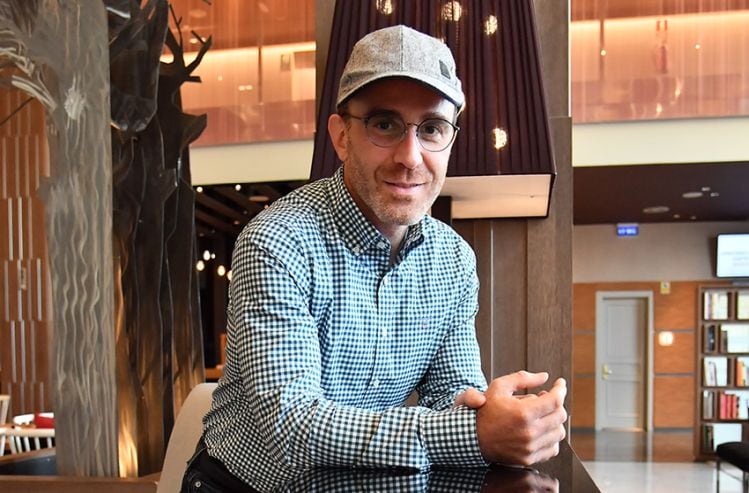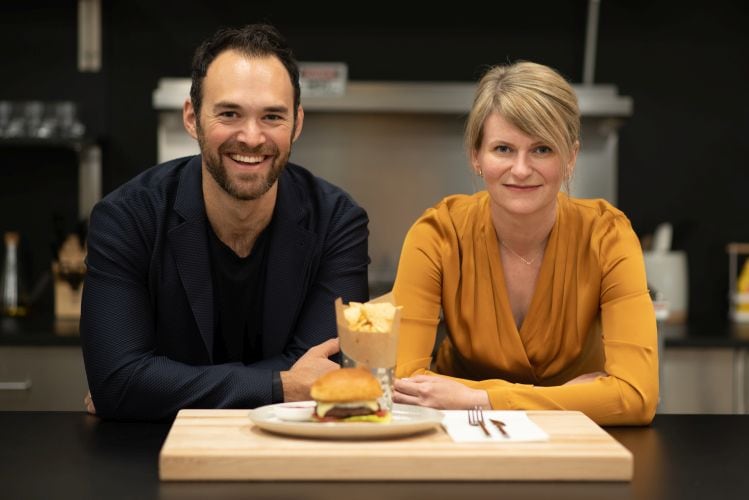So what does it mean in practice?
In the US, for cultivated meat & poultry, the FDA regulates cell collection, banking, growth and differentiation.
However, regulatory oversight switches to the USDA-FSIS once the cells are harvested and through the processing and labeling stages, so UPSIDE must now obtain a grant of inspection from USDA for its facility in Emeryville, CA, and secure a mark of inspection and label approval before its products can hit the market.
It is not clear how long this process will take, but USDA officials have been in contact with UPSIDE throughout the process, and have already visited its pilot facility – which opened last year, so the likelihood is that the first products may get the go-ahead sometime next year.
How is UPSIDE Foods making its chicken?
So how is UPSIDE Foods actually making its products?
While the firm – which was co-founded by cardiologist Dr Uma Valeti in 2015 - has kept its cards pretty close to its chest to date, a scientific memo - released by the FDA reveals some intriguing details about its approach.
So we pulled out some of the details and quizzed Eric Schulze, PhD, VP of regulatory and public policy at UPSIDE Foods, on some of the most interesting parts.
CELL LINES: Myoblasts, fibroblasts
UPSIDE is isolating cells either from adult chickens (a myoblast cell line derived from muscle tissue) or from mid-stage fertilized chicken eggs (a “fibroblast-like cell line” derived from skin tissue). According to Dr Schulze, “Our fat profile is comparable to chicken products on the market today. In our case, the fats are both intracellular produced fats and fats produced in the cell membrane itself.”
GENETIC ENGINEERING: Cell lines immortalized through introduction of a cisgene expressing chicken telomerase reverse transcriptase (TERT)
UPSIDE is deploying genetic engineering to immortalize its cells such that they will proliferate indefinitely and you don’t have to keep going back to the source animal. Immortalization is achieved either through selection in culture or through the “introduction of a cisgene expressing chicken telomerase reverse transcriptase (TERT),” explains the FDA.
“The protein expressed by this gene is a component of the telomere enzymatic complex, which is responsible for the maintenance and lengthening of telomeres. The gene is already present in the chicken genome and is expressed in some chicken cells, including muscle cells.
The protein is “nontoxigenic, is not an allergen, is not heat-stable or resistant to digestion, and would be digested and metabolized like any other food protein upon consumption.”
BIOENGINEERED LABELING? TBC
In addition to the use of the above protein, UPSIDE is also using recombinant proteins in its growth media, which may be detectable in the final product. So will UPSIDE’s chicken require ‘bioengineered’ food labeling under the National Bioengineered Food Disclosure Standard?
According to director of communications David Kay, “We're going to need to see what USDA says and ultimately we're going to abide by whatever their regulations and rules are with respect to labeling. And so we'll have an update on that once we once we got through that process with USDA.”
GROWTH MEDIA: ‘Residual levels in the product do not present safety concerns’
Certain additional components used in the growth media such as emulsifiers and surfactants, antioxidants, growth factors and wash buffers “are largely removed from the cell material by washing prior to conventional food processing,” according to UPSIDE Foods, although it notes that “residual levels in the product do not present concerns given available toxicological information and existing use in the food supply, and that they have no technical or functional effect in the finished food.
ANTIBIOTIC-free process
It also says that “no antibiotics or antifungal agents are used during proliferation or differentiation phases of cell culture.”
BOVINE SERUM ALBUMIN? Being phased out…
While UPSIDE Foods has developed completely ‘animal component free’ growth media the FDA memo describes the use of bovine serum albumin in the growth media.
Asked about this, Dr Schulze told FoodNavigator-USA: “In removing serum in production, one of the ways we've done that so far is by supplementing our media with purified bovine serum albumin, but our goal, of course, is to move into fully recombinant albumin as well. But we have developed a formulation that is completely animal component free which applies to some of our products and we are working right now to phase that in across our entire product portfolio.”
BIOREACTORS: Proliferation followed by differentiation and maturation
The production process is two-pronged. The cells are cultured by first increasing total cell numbers in a suspension culture proliferation phase, followed by a subsequent differentiation and maturation phase in a separate vessel.
It is possible, however, to harvest the undifferentiated cell biomass, combine it with, say plant proteins, and make processed products such as nuggets and burgers, Dr Schulze told us. “We plan to take those kinds of [hybrid] products to market as well, which is what many vendors in this space are doing as it is a much more common off the shelf solution to producing a cultivated meat product.
“So we will be doing both a blended or ground type product, and then a fillet style tissue product, that we believe is our real differentiator."
DIFFERENTIATION AND MATURATION: To create multicellular tissue
In a second vessel, where UPSIDE can create more meaty tissue, the cells “are encouraged to differentiate and assume characteristics of muscle cells (myocytes) and connective cells (fibrocytes) through adherence to the surface of the culture vessel [rather than to edible scaffolding] and through introduction of additional medium components… during this phase the surface-adherent cells also adhere to each other to form a multicellular tissue.”
The cells are harvested in the form of sheets of cells washed from the surface of the culture vessel into a collection basin, followed by subsequent washing and moisture adjustment in a temperature-controlled environment, said the FDA.
“The harvested material, following washing, is described as a coherent tissue of chicken (Gallus gallus) cells, similar in composition and nutritional characteristics to conventional poultry products.”
Asked about the thickness of the sheets, Dr Schulze said: “It varies, but we do not use any artificial scaffolding, the cells are adhering to the vessel, but it's in the order of millimeters.”
FINAL PRODUCTS
After the meat is harvested and washed, he said, “It comes into the processing side of the facility. And then it's processed on typical meat processing equipment.”
NUTRITION: Folic acid level slightly raised
According to the FDA memo, UPSIDE’s “batch data indicated elevated folate levels relative to conventional ground chicken.” However, the level is “much lower” than levels of folic acid authorized by regulations, added the agency.
“We did not identify the establishment of exact equivalence of all nutrients and components relative to a particular conventional comparator as a necessary component of UPSIDE’s safety conclusion, nor did we interpret the analytical data provided by the firm as definitive nutritional information regarding either harvested cell material produced through the process or food products that contain this material.”
According to Dr Schulze: “We’re not planning to make any health or nutritional claims at this point, although that is on our roadmap down the road.”
OTHER PRODUCTS IN THE PIPELINE?
Should UPSIDE Foods wish to introduce meat products from different species (pork, beef etc) said Dr Schulze, “From the FDA’s perspective, the switch to different species would potentially introduce different risks, but the process and the process overall [is not wildly different], so we expect [the regulatory approval process] to be much faster than the first, but to the exact amount of time I could not say.”

Dr Uma Valeti: ‘We started UPSIDE amid a world full of skeptics, and today, we’ve made history’
“This is a watershed moment in the history of food,” said founder and CEO Dr. Uma Valeti.
“We started UPSIDE amid a world full of skeptics, and today, we’ve made history again as the first company to receive a ‘No Questions’ letter from the FDA for cultivated meat. This milestone marks a major step towards a new era in meat production.”
Dr Schulze added: “FDA sets the standard for global acceptance of new food innovations, and we are incredibly grateful for the agency’s rigorous and thoughtful process to ensure the safety of our food supply.”
In a press release announcing the news, the FDA – which is “already engaged in discussion with multiple firms about various types of products made from cultured animal cells” - said it planned to issue guidance to assist firms with pre-market consultations for cultivated meat.
“The published draft of this guidance will provide a formal opportunity to the public for comment.”
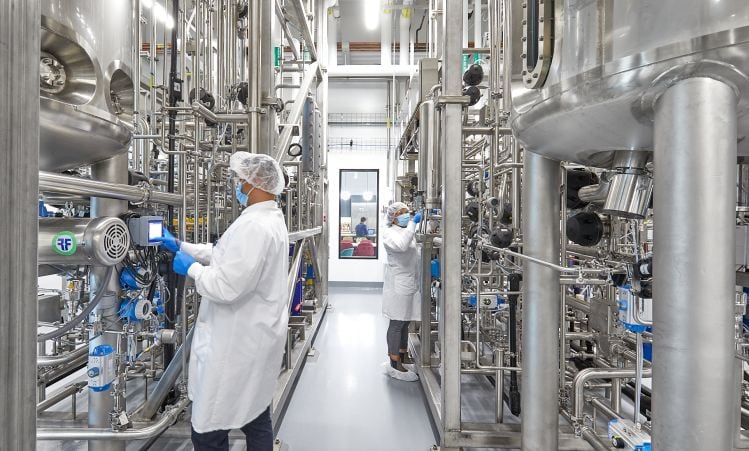
Cumulative funding of $608m, large-scale plant in the works
The best-funded player in the nascent cultivated meat space, UPSIDE Foods recently closed a $400m series C round bringing its cumulative funding to $608m (giving it a valuation of >$1bn before it has launched a single product on the market), money that will help support a commercial-scale facility with an annual production capacity of “tens of millions of pounds.”
Co-founded by cardiologist Dr Uma Valeti in 2015, UPSIDE Foods recently opened an innovation center and pilot facility in Emeryville, CA, which can produce 50,000lbs of finished product a year, with a future capacity of over 400,000/lbs/year – a drop in the ocean in the context of conventional meat production, but a significant milestone for an industry that didn’t even exist seven years ago.
The series C round – let by Temasek and the Abu Dhabi Growth Fund and backed by Cargill, Givaudan, and Tyson Foods among others - will fund a larger scale facility capable of producing multiple species of meat in ground and whole cut formats, with an initial focus on chicken.
Amy Chen: 'I had that first bite and realized that it was simultaneously one of the most unremarkable things and one of the most remarkable things I've ever eaten. It’s just meat'
So what persuaded investors to part with such jaw-dropping sums, when we are being told by some commentators that growing meat from animal cells, outside of an animal, faces “intractable” problems at food scale?
A combination of belief in the team and its ability to execute its vision, improvements in key metrics that will make the unit economics of cultivated meat production progressively more appealing (“a deep amount of confidence in the state of our technology”), and the conviction that current ways of producing meat are unsustainable, claimed Chen in a recent interview with FoodNavigator-USA.
The current socio-economic turmoil also highlights the fragility of the conventional meat supply chain, she said: “We were raising money [against a backdrop of] Omicron, [the conflict in] Ukraine, and just a tremendous amount of macro-economic instability and supply chain disruptions, which means the price of meat [from slaughtered animals] is going up and up.
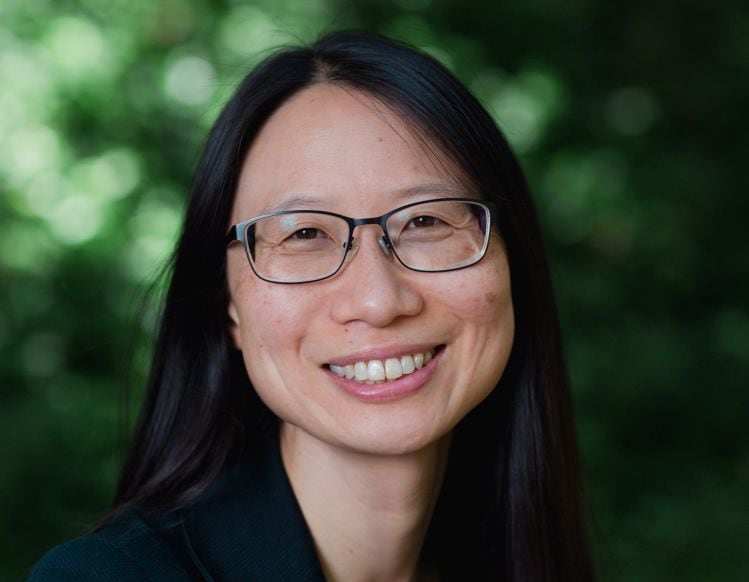
“And the last thing [the really moved the needle for] investors is the taste. As I’ve said before, before I agreed to come on, I had to try the meat. I had that first bite and realized that it was simultaneously one of the most unremarkable things and one of the most remarkable things I've ever eaten. It’s just meat.”
GFI: 2021 a year of robust progress for cultivated meat
According to the Good Food Institute (GFI), which promotes plant-based, fermentation-based, and cultivated (cell-cultured) alternatives to meat, dairy, eggs and seafood, well over 100 startups are now focused exclusively on developing cultivated meat inputs or end products, while 64 companies, largely in the life sciences, have publicly announced a business line in cultivated meat.
Investment in cultivated meat companies topped $1.36bn in 2021, with meat giant JBS announcing a $100m investment including an agreement to acquire Spanish company BioTech Foods, invest in the construction of a new production facility in Spain, and establish Brazil’s first cultivated protein R&D center, said the GFI in a recent state of the industry report on cultivated meat, which you can download HERE.
Bioreactor bottleneck?
Several firms including GOOD MEAT (the first company to commercialize cell-cultured meat), Believer Meats (formerly Future Meat Technologies), BlueNalu, Aleph Farms, SuperMeat, Wildtype, UPSIDE Foods and Shiok Meats have now opened pilot facilities for cultivated meat, which is now on the market in Singapore, and awaiting regulatory approval in several other markets, said the GFI, noting that “any near-term commercial launches will be very small scale, with limited product availability and premium positioning owing to the high cost of producing smaller volumes.
“Pilot-scale cultivated meat facilities will produce hundreds or thousands of kilograms of biomass annually. This means that companies are likely to have capacity to supply a limited number of high-end restaurants in the coming one to three years, along with producing samples for regulators and key industrial partners.”
Meanwhile, key hurdles remain, said GFI, which says “expected needs far outstrip existing global bioreactor capacity.”
“The FDA's decision reflects a thoughtful, rigorous and science-based process that took place over the course of several years.” AMPS Innovation
“The approval of cultivated meat in the US from the FDA is arguably the most important regulatory milestone yet for the future of food industry. This is no longer science fiction: we can now grow real meat without an animal. We expect a domino effect as more countries will follow suit. The move by the US regulators has once again left the UK and Europe behind on the path towards innovation.” Rosie Wardle, co-founder and partner at Synthesis Capital (investor in UPSIDE Foods)
"Years ago, PETA funded the very first foray into cultured meat research at two US universities, offered a $1m prize for the first laboratory that could create commercially viable lab-grown chicken meat, and even patented the findings of a scientist who eventually joined UPSIDE Foods before selling the patent to the startup at a very low cost, so we’re over the moon to see slaughter-less meat becoming a reality. But as billions of animals are still killed every year for food, animal agriculture is fueling the climate catastrophe, and delicious vegan meats are already widely available, there’s no reason to wait on government greenlights; everyone can and should go vegan now." Tracy Reiman, EVP, PETA
“We cannot reach our greenhouse gas emission reduction goals without transitioning the food system away from animal agriculture, one of the highest polluting and most destructive industries in the world.” Lisa Feria, CEO and managing partner, Stray Dog Capital (investor in UPSIDE Foods)
“A shift towards cultivated meat has the potential to bring massive benefits for food security, public health, ecosystem recovery, and regional bio-economies that create new jobs and livelihoods.” Bruce Friedrich, president, The Good Food Institute

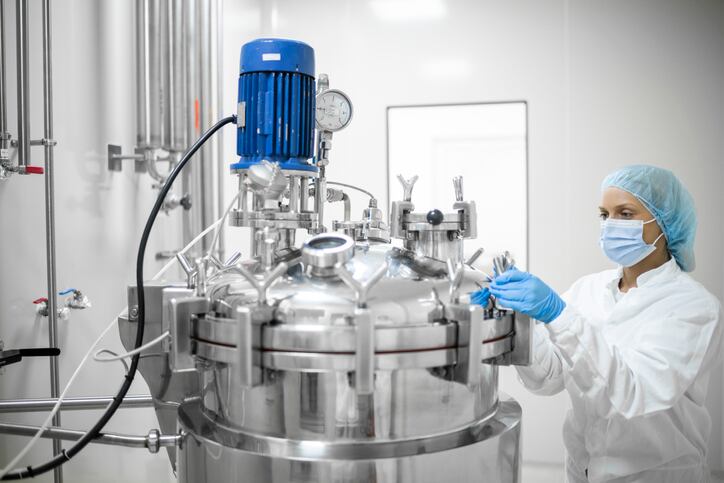
![WATCH: Future Meat rebrands as Believer Meats: ‘A cow needs about two acres of land to grow. This [pilot plant] is the size of your living room and it can make a cow a day’](https://www.foodnavigator-usa.com/resizer/v2/NKPTSIGBBVOVNDND7Y2FSNHFDA.jpg?auth=565445653f5ab716fe9ff916f0d491943cd40643844fda231daa3123789f5fe1&smart=true)
